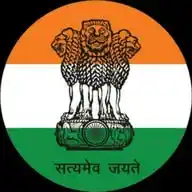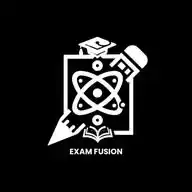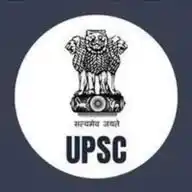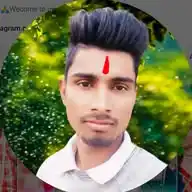
UPSC™ History UPSC UPSC UPSC UPSC UPSC UPSC Upsc Upsc UPSC UPSC UPSC UPSC UPSC UPSC UPSC UPSC UPSC™
12.2K subscribers
About UPSC™ History UPSC UPSC UPSC UPSC UPSC UPSC Upsc Upsc UPSC UPSC UPSC UPSC UPSC UPSC UPSC UPSC UPSC™
Main channel cse exam https://whatsapp.com/channel/0029Va9AbAbJZg46NAznuX2y *Subject wise channel* Upsc society https://whatsapp.com/channel/0029VaWufLw6BIEknk3zHz2R Internal security https://whatsapp.com/channel/0029VabMGoV7YSczWUxg4d2F Art and culture https://whatsapp.com/channel/0029VaeNm6EEquiVREmJrl0F Mindmap https://whatsapp.com/channel/0029VaazqwV8aKvFQwYJlw02 Ethics https://whatsapp.com/channel/0029VaaWX4aFCCobFmqcRL3q ✅ CSAT https://whatsapp.com/channel/0029Vabv60LLCoWsu9kNQl1I ✅Upsc PIB https://whatsapp.com/channel/0029VaGjIdyChq6H86MD643x ✅Science & technology https://whatsapp.com/channel/0029Va9T3U31Hspr7kNcod0g ✅Environment & ecology https://whatsapp.com/channel/0029VaBiYQY2Jl8LDfC2YZ3j ✅Upsc mains facts https://whatsapp.com/channel/0029VaQy4BBJUM2TXmGueJ2T Mains pyq model answer https://whatsapp.com/channel/0029VajSp953bbV4XmAbtb26 ✅Geography Mapping https://whatsapp.com/channel/0029Va9S9pL0rGiGyEIEUe1b ✅Polity governance https://whatsapp.com/channel/0029VaGDohxKrWQz0GZ5Fa1v ✅Prelims tricks https://whatsapp.com/channel/0029VaEPayu2v1InlnkS6K06 ✅Anmol vachan motivational https://whatsapp.com/channel/0029Va42j79297531AcAOm1X ✅Essay ethics example https://whatsapp.com/channel/0029VaHNc8mDuMRWb1Zybf33 ✅Economy agriculture https://whatsapp.com/channel/0029VaHOmr34inorlsEbVc2X ✅History culture https://whatsapp.com/channel/0029VaLZoxWBfxo4bstnop1k ✅Hindi medium https://whatsapp.com/channel/0029Va4ktYl8V0ttJgAhH70b ✅UPSC PYQS https://whatsapp.com/channel/0029VaH6GnYBvvsX99pHCG1C Upsc IR https://whatsapp.com/channel/0029VaMyvdJJ3jurNz6pne3z Government schemes https://whatsapp.com/channel/0029VaYZ5ls5Ui2c7bNRo62I
Similar Channels
Swipe to see more
Posts

🔆 Development of Vernacular Education 📍 1835, 1836, 1838: ✅ William Adam’s reports on vernacular education in Bengal and Bihar highlighted defects in the system. 📍 1843-53: ✅ James Jonathan’s experiments in North West Provinces (UP), focusing on opening government schools for vernacular education and normal schools for teacher training. 📍 1853: ✅ In a famous minute, Lord Dalhousie expressed strong support for vernacular education. 📍 1854: ✅ Wood’s Despatch outlined provisions for vernacular education: 1. Improvement of standards 2. Supervision by government agencies 3. Normal schools to train teachers 📍 1854-71: ✅ The government focused on secondary vernacular education, leading to an increase in vernacular schools by more than five-fold. 📍 1882: ✅ The Hunter Commission recommended state efforts to improve vernacular education and mass education to be taught through vernaculars. 📍 1904: ✅ Education policy focused on vernacular education, providing increased grants for it. 📍 1929: ✅ Hartog Committee gave a gloomy view of primary education. 📍 1937: ✅ Congress ministries encouraged the growth of vernacular schools. 📍 Development of Technical Education: ✅ Engineering Colleges: - Roorkee College (1847) - Calcutta College of Engineering (1856) - Poona College of Engineering affiliated to Bombay University. ✅ Medical Training: - Medical College in Calcutta (1835). - Lord Curzon worked to broaden agriculture, medicine, engineering, and other professional education through institutions like Pusa Agricultural College.

🔆 How Civil Servants Helped British Expansion in India 📍 ✅ Administrative Control British officer Lord Cornwallis introduced rules (Cornwallis Code) to make civil services more efficient. This helped the British govern large areas smoothly. 📍 ✅ Revenue Collection Civil servants set up the Permanent Settlement in Bengal, ensuring steady tax collection for Britain and boosting their economic control. 📍 ✅ Legal & Judicial Role They created the Indian Civil Service (ICS) to apply British laws and suppress local opposition, making British authority stronger in Indian society. 📍 ✅ Survey & Mapping Led by Sir George Everest, civil servants conducted large surveys. This gave the British geographical knowledge needed for military and planning. 📍 ✅ Political Manipulation Using the Doctrine of Lapse, civil servants like Lord Dalhousie annexed Indian kingdoms if rulers had no biological heirs, expanding British rule. 📍 ✅ Infrastructure Development Civil servants helped build the railways (from 1853). This allowed faster troop and goods movement, linking India to global markets and strengthening British economic and military hold.

🚩 Foreign Invasions Before Mauryan Empire 🛡️ Iranian (Persian) Invasion (550 - 330 BCE) • Cyrus the Great (558 - 530 BCE): First foreign invader, captured Gandhara. • Darius I (522 - 486 BCE): Annexed Sind, Punjab, NWFP (516 BCE), making Gandhara a Persian satrapy. • Xerxes (486 - 465 BCE): Recruited Indian troops but failed to expand further. • Decline (330 BCE): Darius III lost control of Indian territories after Alexander’s invasion. 🌐 Impact of Persian Invasion • Political: Exposed India’s military weakness, influenced administrative structures. • Trade & Economy: Opened Indus-Arabian Sea trade routes and introduced Persian coinage techniques. • Culture: Kharoshthi script evolved from Persian Aramaic; Persian masonry influenced Mauryan art.

🔆 18th Century: Was it a Dark Age for India? 📍 Disorder & Instability ✅ The 18th century was earlier labelled a “Dark Age” due to widespread political chaos and breakdown of central authority after the Mughal decline. 📍 Failure of Regional Powers ✅ No large empire emerged post-Mughals. ✅ British control eventually restored order. ✅ Northeast & South remained outside Mughal influence — so decline was not uniform. 📍 Scholarly View ✅ Historian Jadunath Sarkar: India’s Medieval Age ended in 1757, and the Modern Age began with British victories post-Plassey, sparking Western influence.

🔆 Why Pottery Matters in Ancient Indian History 📍1. Archaeological Evidence ✅ Acts as a dating tool to trace cultural phases. ✅ Example: Painted Grey Ware → Early Iron Age, North India. 📍2. Cultural Insights ✅ Pottery styles reflect beliefs, lifestyles, and aesthetics. ✅ Design shifts show cultural transitions. 📍3. Technological Development ✅ Shift from handmade to wheel-made pottery indicates tech advancement. 📍4. Economic Activities ✅ Pottery hints at settled agriculture, used in storage, trade, cooking. 📍5. Religious and Ritualistic Use ✅ Pots used in rituals and burials, indicating spiritual beliefs on life & death. 📍6. Regional and Chronological Markers ✅ Specific types (e.g. Black and Red Ware, NBP Ware) help identify periods & regions. 📍7. Trade & Social Organization ✅ Mass pottery production = organized craft + trade networks.

🔆 19th vs 20th Century Peasant Movements (Comparison) Understanding the shift in objectives, leadership, and reach of peasant movements across centuries: 📍 Objective ✅ 19th Century: Focused on economic issues, not colonial exploitation. ✅ 20th Century: Aimed at colonial resistance, e.g., Champaran, Kheda, Bardoli. 📍 Leadership ✅ 19th: Leaders emerged from among peasants. ✅ 20th: Led by Congress/Communists (e.g., Sardar Patel in Kheda). 📍 Spread ✅ 19th: Limited & localised, e.g., Pabna Revolt. ✅ 20th: Nationwide mobilisation, e.g., All India Kisan Sabha. 📍 Colonialism ✅ 19th: Focused on local grievances, not colonial rule. ✅ 20th: Anti-colonial awareness became central. 📍 Organisation ✅ 19th: No formal structure. ✅ 20th: Structured bodies like All India Kisan Sabha (Sahajanand Saraswati). Conclusion: Movements evolved from economic protests to political resistance, reflecting rising national consciousness.

🔆 Mauryan Period: Important Texts and Inscriptions 📍 Arthashastra ✅ Polity/Statecraft ✅ Author: Chanakya ✅ Description: Ancient Indian treatise on statecraft, economic policy, and military strategy, written in Sanskrit. 📍 Natural History ✅ Author: Pliny ✅ Description: Tells us about the strength of CGM’s army (600K infantry, 30K cavalry, 9K elephants) and about the flora, fauna, minerals, geography, etc., of India. 📍 Milind Panha ✅ Author: Nagasesena ✅ Description: Dialogue between Indo-Greek king Menander I and Nagasesena discussing Buddhism. 📍 Indica ✅ Author: Megasthenes ✅ Description: Survived in fragments, detailing Mauryan administration and military organization, particularly in Patliputra. 📍 Vinaya Pitaka ✅ Author: Upali ✅ Description: Written in Pali, deals with monastic rules for monks and nuns. 📍 Abhidhamma Pitaka ✅ Author: (Unknown) ✅ Description: Deals with philosophy and metaphysics. 🔆 Other Texts and Inscriptions 📍 Sutta Pitaka ✅ Author: Ananda ✅ Description: Written in Pali, deals with dialogues and discourses on morality and Dharma. 📍 Kalpasutra ✅ Author: Bhadrabahu ✅ Description: Written in Prakrit, deals with the life stories of the last two Jain Tirthankaras. 📍 Junagarh Rock Inscription ✅ Author: Rudradaman I ✅ Description: Credited with the first long inscription in chaste Sanskrit, mentions repairs to the Sudershana Lake. 📍 Shalihotra Samhita ✅ Author: Shalihotra ✅ Description: Deals with the anatomy of horses.

🔆Buddhism & Jainism: Sacred Geography Unfolded 🛕 Buddhist Hotspots 📍 Hidden in the Caves ✅ Nashik, Karle, Kanheri, Gunnar — ancient meditation hubs carved in stone 📍 Sects Meet Space ✅ Kausambi → Theravadins ✅ Mathura → Sarvastivadins ✅ Nashik/Kanheri → Bhadra Yanika ✅ Mahayana flourished in South Asia ✅ Sarvastivadins stronghold in North India 📍 Dynastic Patronage ✅ Sungas → Barhut, Bodh Gaya, Sanchi ✅ Kushanas → Purushpura, Gandhara, Taxila, Mathura 📍 Star Pilgrimage Site ✅ Mahachaitya, Nagarjunakonda — Buddhist architectural marvel ☸️ Jain Footprints Across Time 📍 Post-Mauryan Imprints ✅ Ujjain & Kankali Tila (Mathura) → Jain inscriptions etched in stone 📍 Orissa Chronicles ✅ Udayagiri & Khandagiri Caves → Jain sanctuaries ✅ Hathigumpha Cave → Svetambaras migrated under Kharavela to East Andhra 📍 Malwa Memory ✅ Jain migration in 1st Century BC, found in Kalkacharya Katha 📍 South Indian Legacy ✅ Silapattikaram & Manimekhalai — Sangam texts with Jain ethos ✅ Sittanavasal Caves → Breathtaking Jain frescoes 📍 Beyond Borders ✅ Jainism’s serene trail continues in Nepal

🔆 Sir C. Sankaran Nair – A Forgotten Reformist 📍 Legacy & Politics ✅ Only Keralite to preside over the Indian National Congress. ✅ Both BJP & Congress seek to claim his legacy, but his ideological depth resists labels. 📍 Views on Gandhi & Methods ✅ Criticized Gandhi’s contradiction between Ahimsa and caste. ✅ Opposed non-cooperation & Khilafat, upheld constitutionalism. ✅ Yet shared admiration for village republics and supported social reforms. 📍 Liberal Humanist & Secularist ✅ Influenced by Western liberal thought – Macaulay, Mill. ✅ Advocated free speech, English education, and women’s emancipation. ✅ Opposed mixing religion with politics. 📍 Courage & Contributions ✅ Condemned Jallianwala Bagh despite being in British Council. ✅ Backed caste reforms, rejected extreme nationalism, and supported grassroots empowerment. 📍 Recognition ✅ Autobiography revived by granddaughter in 1966. ✅ Still underrepresented in Indian historiography.

🔆 Other Important Events in World History – Israel-Palestine Conflict 📍 Overview ✅ The Arab-Israeli conflict is a prolonged political and military dispute involving Israel, Arab nations, and Palestinian groups. Originating in the late 19th–early 20th century, it has witnessed multiple wars and peace efforts over decades. 📍 Roots of the Conflict ✅ The conflict began with the rise of Jewish nationalism (Zionism) and increased Jewish immigration to Ottoman-controlled Palestine in the late 1800s. ✅ Growing tensions between Jews and Arab Palestinians emerged due to demographic and political shifts. ✅ British control post–World War I worsened the conflict through contradictory promises to both Jews and Arabs. ✅ It escalated after the 1947 UN partition plan, which proposed a two-state solution. ✅ The creation of Israel in 1948 triggered war and the mass displacement of Palestinians, marking a lasting humanitarian and territorial crisis.












